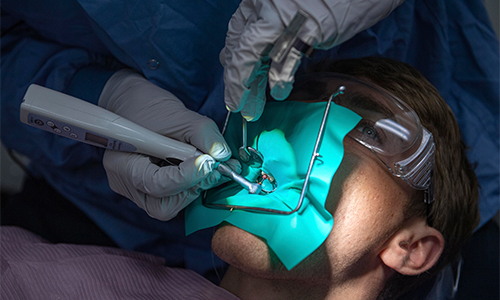How Painful Is Root Canal Procedure? You Must Read Everything
Are you experiencing a toothache, sensitivity to hot or cold temperatures, inflamed or bleeding gums, or discomfort while eating? Severe tooth decay or injury may be the culprit and a root canal may help you save that tooth.
A root canal treatment (RCT) also referred to as endodontic treatment, is a restorative dental service to eliminate the infected tooth pulp and alleviate the associated pain or any other discomfort. Root canals are usually performed on cracked, decayed, or infected teeth, and to minimize the pain caused by large dental fillings or facial trauma.
How painful is root canal procedure? In earlier times, root canal procedures were quite painful and a lot of people still assume that they are. However, the unfiltered truth is that root canal treatments are usually not painful and one should not be afraid of undergoing this treatment. One can leave the dental office feeling better without any dental or facial pain.
When Is Root Canal Process Performed?
Root canal surgery is necessary in the following cases:
- Gum swelling close to the aching tooth
- An accident or trauma leading to chipped/cracked teeth on which bacteria grow, resulting in inflammation and infection extending to the innermost region of the tooth
- Severe tooth pain experienced while chewing, biting, or applying any other pressure
- Sensitivity to hot or warm foods/beverages or while eating ice cream and drinking ice-cold water
- Tooth discoloration because of infected tooth pulp
- Loose teeth because of severe infection
- The appearance of small pimple-like bumps on the gums lying next to the area with tooth pain.
What Can I Expect Pain During or After Root Canal Procedure?
Modern Day Root Canal- How painful is a root canal process? No, modern-day RCT performed in Chicago at The Dental Specialist (TDS) is usually painless because dentists now use local anesthesia to numb the tooth to be treated and its surrounding tissues. Hence, you should experience no pain or discomfort during the procedure. However, mild pain or discomfort is common for a few days following the treatment.
Pain After Root Canal Process
How long does a root canal pain last? Following the treatment, when the effect of anesthesia wears off, one may experience some tenderness and sensitivity for a few days. In this case, you can manage the discomfort with over-the-counter analgesics and are advised to stick to a liquid or soft diet as well as avoid chewing with the treated tooth until there is no discomfort. If you experience pain beyond the time of recovery, consult your dentist promptly.
If you are still worried or fearful of experiencing pain, you should be aware that the procedure actually helps you get rid of pre-existing pain and you must not avoid it because you may lose your natural tooth and would have to go for missing tooth replacements.
How Is Root Canal Performed?
The expert endodontist in Chicago at The Dental Specialist (TDS) performs root canal treatment over two or more dental appointments. The treatment involves the following steps outlined below:
Step 1. Preparation: Prior to the root canal treatment, the dental professional takes a dental X-ray of the affected tooth to get a clear picture and to look for signs of infection spreading to gums and other teeth. The anesthesiologist provides then administers local anesthesia to the patient. A rubber sheet or dam is wrapped around the diseased tooth to keep it dry and to avoid the patient swallowing any chemicals used during the procedure.
Step 2. Removal of Infected Tooth Pulp: Once the anesthesia takes effect, the dentist drills the top of the tooth to gain access to the infected tooth pulp. This pulp contains bacteria, exposed tooth nerves, and blood vessels. The dentist uses specialized dental instruments to completely remove them and any associated debris.
Step 3. Cleaning And Filling of The Root Canal: Next, the dentist thoroughly cleans the root canal with dental scrapes or filing tools and may even enlarge the canal to give them a proper shape so that it can be filled. Then, the empty tooth canal is sealed with a temporary dental filling. This step takes a few hours or may require multiple dental visits. Finally, the patient is given antibiotics.
Step 4. Sealing and Fixing of The Treated Tooth: In the next dental appointment, temporary filling and medications are replaced with a permanent root canal that seals the tooth and prevents re-infection. If the tooth happens to be discolored, dental bleaching may be performed.
Step 5. Adding A Tooth Cap or Dental Crown: This step is necessary to protect and stabilize the tooth while also restoring its proper form and function. A dental cap/crown completely covers the tooth and prevents its fracturing after root canal treatment.
Get in touch with us if you’re searching for a painless root canal procedure in Chicago!

